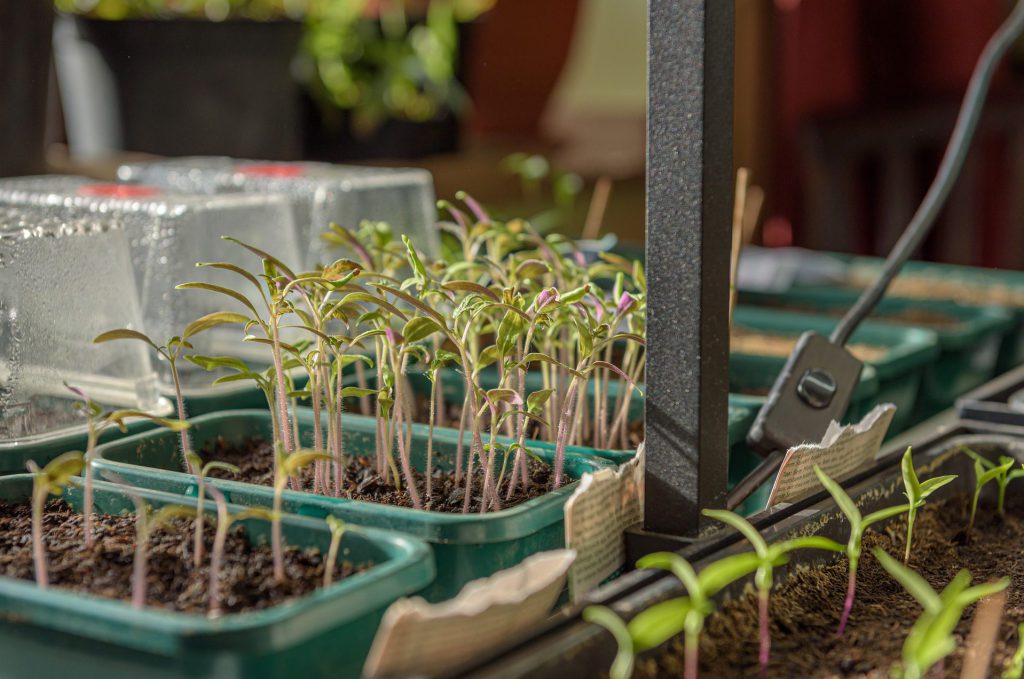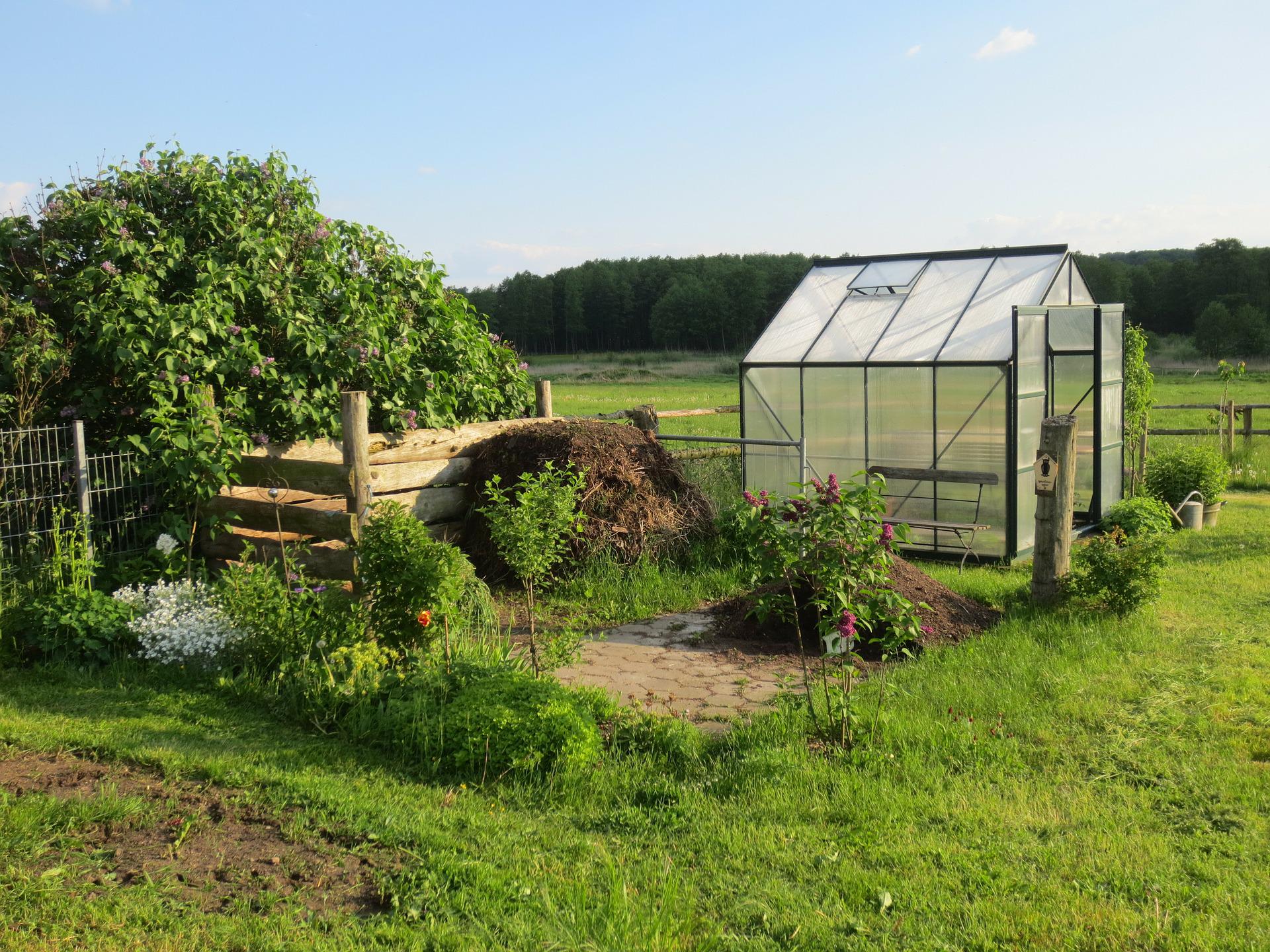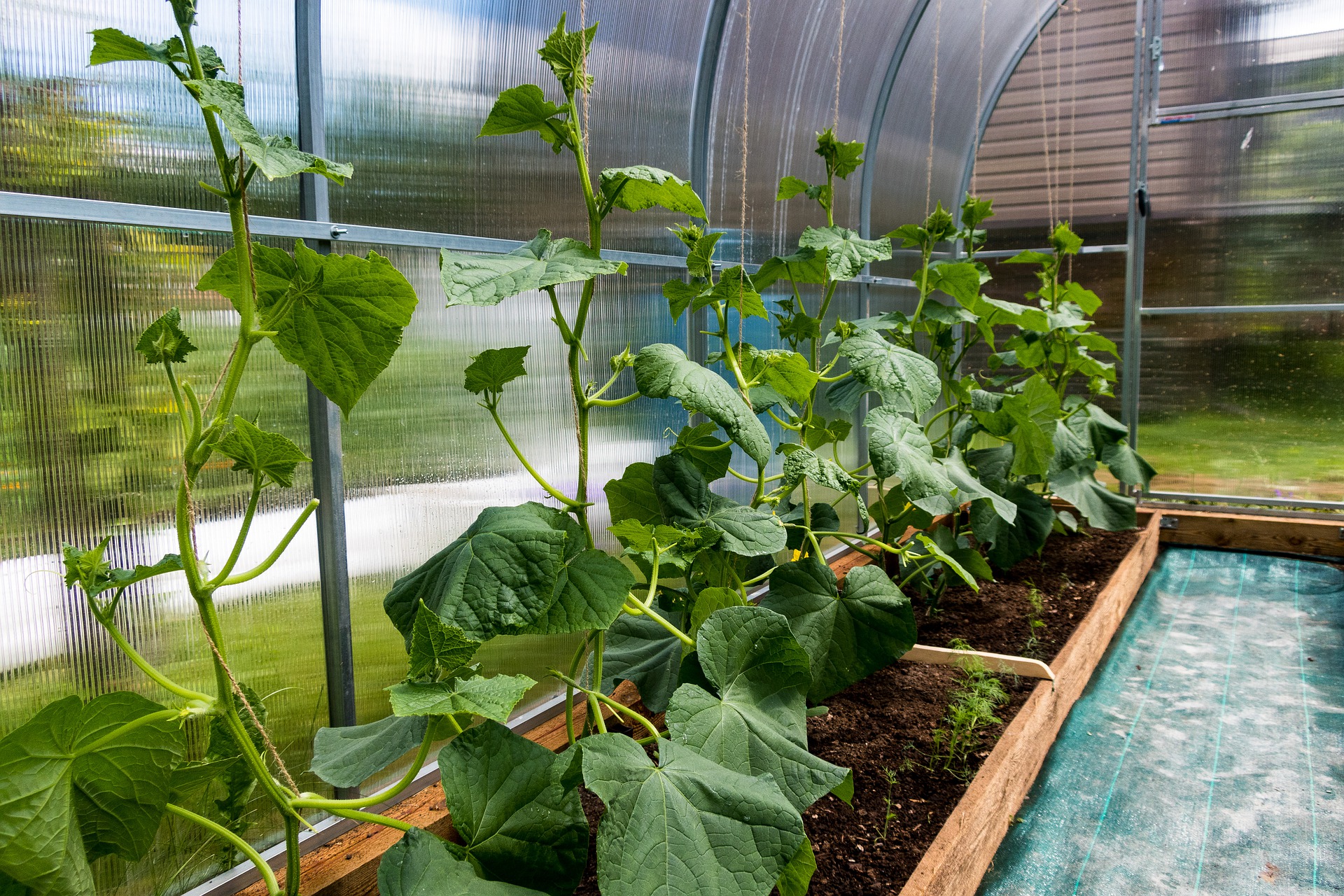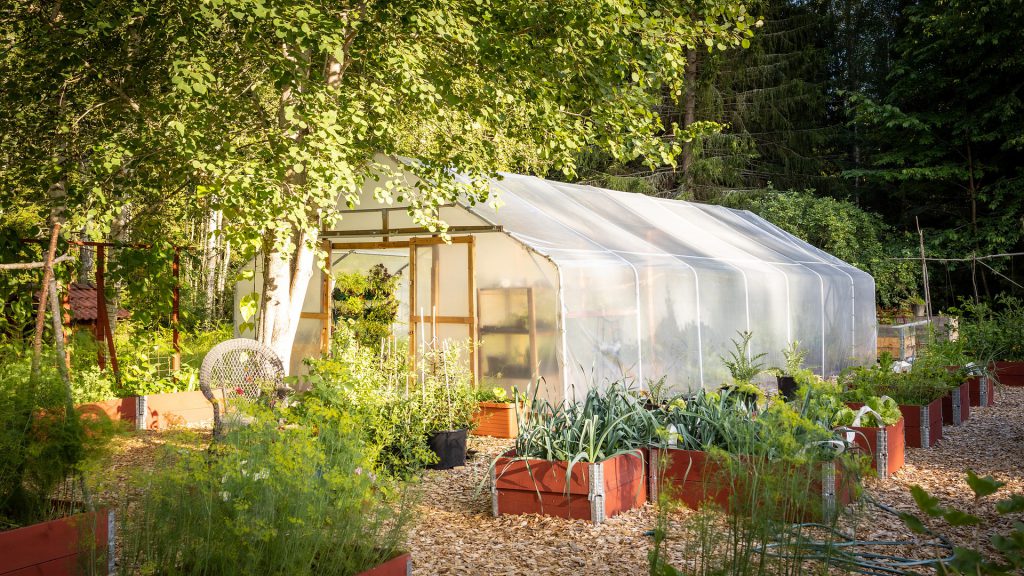You don’t need a greenhouse to grow vegetables. Growing vegetables in a vegetable garden go without major problems in most cases. But a greenhouse is a very nice addition to your vegetable garden. The summer season will be a lot longer, and you will often harvest better vegetables.
Why grow vegetables in a greenhouse?
By growing fruits and vegetables in a greenhouse, you will notice that the growing season of your vegetable garden will be a lot longer. You can start sowing earlier in the season because the temperatures are a lot higher in a greenhouse. But you can still grow beautiful vegetables in the greenhouse when it gets colder outside in autumn.
Especially for vegetables like tomatoes or cucumbers, a greenhouse is ideal. You have less trouble with the weather, so the vegetables will also be nicer. For example, it is easier to grow beautiful tomatoes.
When you start sowing in the spring, you can of course do this in the vegetable garden outside the greenhouse. But the chance of damaging the plants is high in the spring. If you sprout these seeds in the greenhouse first, you can move the stronger plants outside to continue growing when the weather calms down.


You can also grow other vegetables in a greenhouse that you might not be able to grow outside because the weather stays too cold. Try growing sweet potatoes or melons in a greenhouse!
How does a greenhouse work?
A greenhouse is often made from glass or plastic, as the sun shines on the glass the temperature in the greenhouse rises quickly. (For example, with a few hours of sunshine a day in spring and fall, you can already have a perfect temperature for growing vegetables in a greenhouse.) Most fruits and vegetables need warmth to grow, when you don’t have this outside yet, a greenhouse is a godsend.
Of course, you can arrange a greenhouse as you wish, and depending on its size you can grow many different fruits and vegetables in it.
You can go a step further and heat the greenhouse. That way you can grow the most beautiful vegetables all year round. But for many people, this is a bit too much, and they settle for growing vegetables for a few months longer.
Do I need a greenhouse for my garden?
Whether or not you need a greenhouse in your garden depends entirely on your wishes and your way of gardening.
Do you only want to be busy in the vegetable garden when the weather is nice and you like it when you can eat some vegetables from your garden?
Or do you want to be as self-sufficient as possible and buy fewer vegetables? Will you continue growing throughout the winter, and want to plant seeds early in the spring? Then you’ll benefit greatly from a greenhouse, and you won’t be able to do without one.


Are you considering installing a greenhouse in your vegetable garden?
If you are considering installing a greenhouse, you must check a few things carefully and plan before you get started.
For example, you may need to apply for permits to install a greenhouse from the municipality where you have a vegetable garden or where you live. Or perhaps there are rules in place to ensure that the vegetable garden is not built too high. Always check this before you start planning to avoid disappointment during the process.
Also consider what facilities you would like to install at the greenhouse, think of water or electricity.
When you have checked whether it is possible to place a greenhouse, you should look at how big the greenhouse should be. Here it is important to consider what you want to use the greenhouse for.
If you are only going to grow seedlings in the greenhouse, then you can use a smaller size vegetable greenhouse than if you want to grow all your vegetables in the greenhouse all winter.
Think about what you want to grow in the greenhouse and then measure out approximately how big the greenhouse should be. Always choose a greenhouse that is slightly larger than you have planned. Because you’ll find out that you’ll be using the greenhouse for more things anyway.
Building a greenhouse
You can of course choose to make the greenhouse yourself, and build it from wooden beams or PVC tubes with plastic over the frame. But there is a much easier way these days (and sometimes more economical too), opt for a ready-made kit. These kits come in many different sizes, and you can decide whether you want an aluminum or steel frame. You can also choose to have the frame powder coated, which ensures that the greenhouse will last much longer.
A wooden frame is not a good option in many cases, because the wood will rot more quickly. Especially if you live in a humid area.
Then there is the choice of glass or polycarbonate. A glass greenhouse often looks nicer, but when you choose polycarbonate you go for sturdiness and durability. Glass will break in the slightest storm or hailstorm, and you will find glass everywhere. With polycarbonate, the chance of damage is a lot less, while it does allow perfect sunlight through. An additional advantage is that it insulates better and therefore keeps the heat in the greenhouse better.
To ensure that the greenhouse is stable and firm, it is wise to place the greenhouse on a foundation, this does not have to be a complicated construction. For example, use tiles to create a stable base, or masonry a small foundation of bricks before placing the greenhouse.


The flooring of a greenhouse
When you have designed your desired greenhouse, it’s time to think about the greenhouse’s flooring. Will you go for bare soil or bark mulch which many gardeners love?
If you choose to keep the bare soil in the greenhouse you have to keep in mind that it will become very muddy and uneven. This is the cheapest option though.
Another option is to use bark mulch on the walkways, this looks neat, but beware because while bark mulch is good to use outdoors, inside a greenhouse it can cause mold problems due to moisture.
Another option is to tile the walkways, when you put tiles on the walkways you will be able to stand comfortably while working on your plants. In addition, critters do not like tiles, so you immediately fight some chances of pest problems.
You could also choose to make elevated planters, then it is even easier to work. And you can fill the boxes with your desired soil mix.
The best place for a greenhouse
One of the most important things when placing the greenhouse is where you place it in the vegetable garden. The sunniest spot in the vegetable garden is the best place for a greenhouse. After all, you want to make sure that even in the winter, the plants in the greenhouse get at least 5 to 6 hours of sunshine a day.
If you have the option of placing the greenhouse so that the longest side of the greenhouse faces south (when you live in the northern hemisphere), you will ensure that you have the most sun shining on the largest area of the greenhouse. In some gardens this is not possible, then look for the sunniest spot and determine how to place the greenhouse based on the space you have. In the summer it can get very hot in a greenhouse, so if you can provide afternoon shade in the summer as well, you make sure you have the best spot.


Have a greenhouse in a small vegetable garden?
If you have a small vegetable garden it is difficult to place a greenhouse, this greenhouse takes up a lot of space and may not fit optimally into your vegetable garden. You can also opt for a mini-greenhouse, a so-called “Cold Frame”. This is a container that sits low to the ground and is often homemade. You can make these containers as big as you want, the glass makes them look like a mini greenhouse. The principle works the same as a greenhouse in a vegetable garden but downsized. More and more people are using a “Cold Frame” because it adds value to the vegetable garden.


Ventilation in a greenhouse
It is very important to provide good ventilation in a greenhouse. It’s great that the sun warms the greenhouse but you also need some air circulation. And by ventilating, you create the ideal balance in temperature for the good growth of plants.
By ventilating well you also prevent fungi and diseases from growing.
If you want to go a step further with ventilation you can place fans in the greenhouse, these fans ensure that the air flows through well.
Automatic ventilation is built into the more luxurious greenhouses. These are panels of the greenhouse that open automatically when the air in the greenhouse becomes (too) warm. The principle is very simple, these panels have an opening mechanism that contains a certain liquid or wax, when the air in the greenhouse warms up this wax expands and the panels open.
Of course, you can also keep an eye on the temperature and manually open the panels to ventilate. But nowadays we are all busy and it can just happen that you forget. As soon as it gets too hot in the greenhouse, the plants and seeds suffer, so pay attention to this.
Heating a greenhouse
If you want to continue growing in the greenhouse during the winter (and early spring), it might be too cold for the seeds to grow well. You can use heating mats which you put under your planted seeds, so the soil warms up and the seeds have a better time. These so-called seedling heat mats are meant to grow the plants and make the seeds sprout.
To keep plants warm in the greenhouse in winter you need to use heaters. But for most gardeners, these mats will be perfect.
Electricity in a greenhouse
Coming straight to electricity. For many of these extras, you need electricity. This is not always present in a vegetable garden or greenhouse but is a handy addition. However, in some cases, it is not easy to place. Think of municipal vegetable gardens or vegetable gardens outside residential areas.
You can solve this by installing solar panels, not nice for the look but very efficient when you need electricity for heating the greenhouse for example. Or the irrigation system of the vegetable garden. No large solar panels are needed for this, but you do need to be able to store the energy using batteries, for example. It is a hefty addition to the installation, and you have to ask yourself if this is worth it for the added value it achieves.
Collecting rainwater
When you install a greenhouse in a vegetable garden, immediately look at whether it is possible to collect the rainwater by installing a rain gutter alongside the greenhouse.
The surface area of most greenhouses is sizable, so you’ll catch a lot of rain. If you make sure you collect this water, you can use it super well to water your plants.
Conclusion
The use of a greenhouse is different for each area, do you live in an area where it stays cold for a long time in the spring? Then a greenhouse could be a godsend for you. Do you want to grow fruits and vegetables all year round? Then go see if a greenhouse is a possibility in your vegetable garden.
Growing in a greenhouse involves a bit more than just installing a greenhouse, but you too can grow thriving vegetables in a greenhouse!



